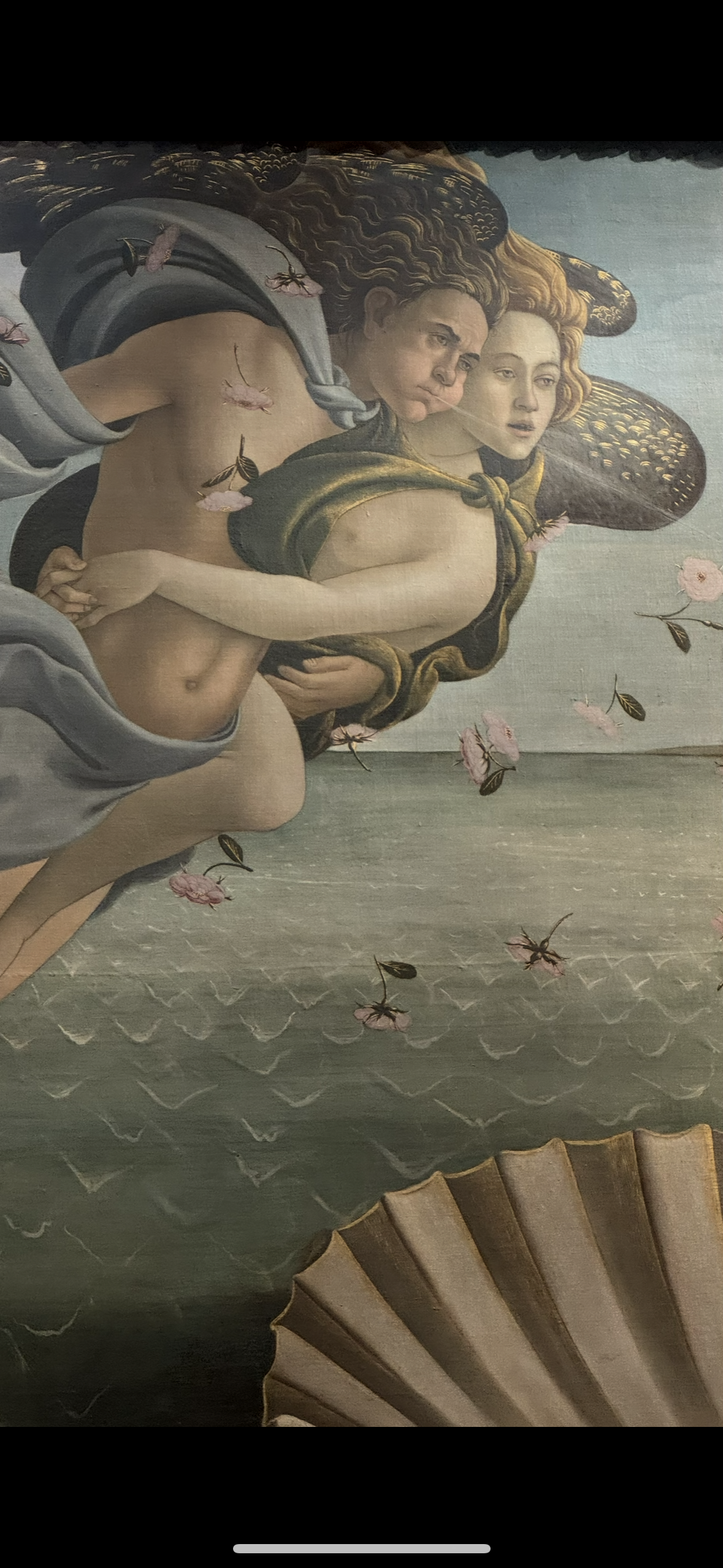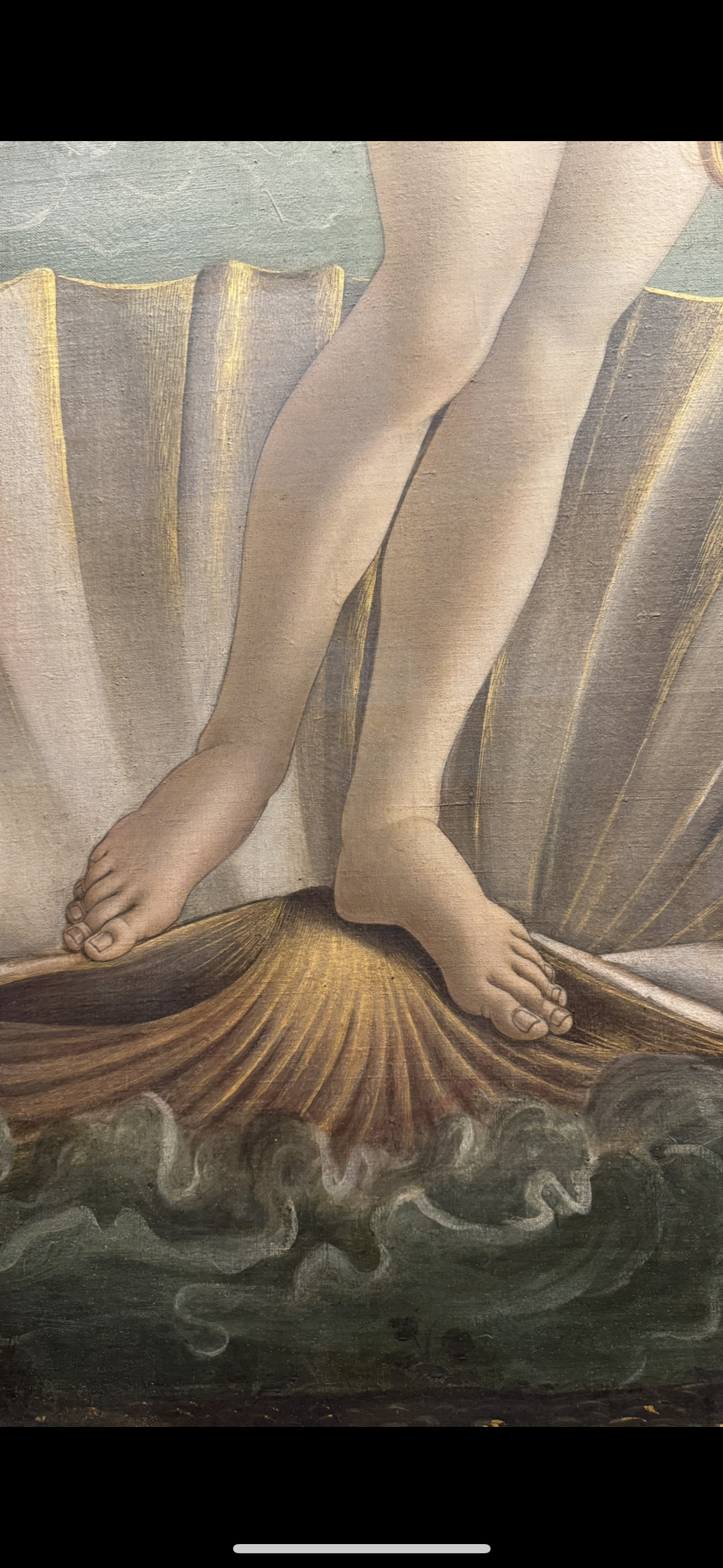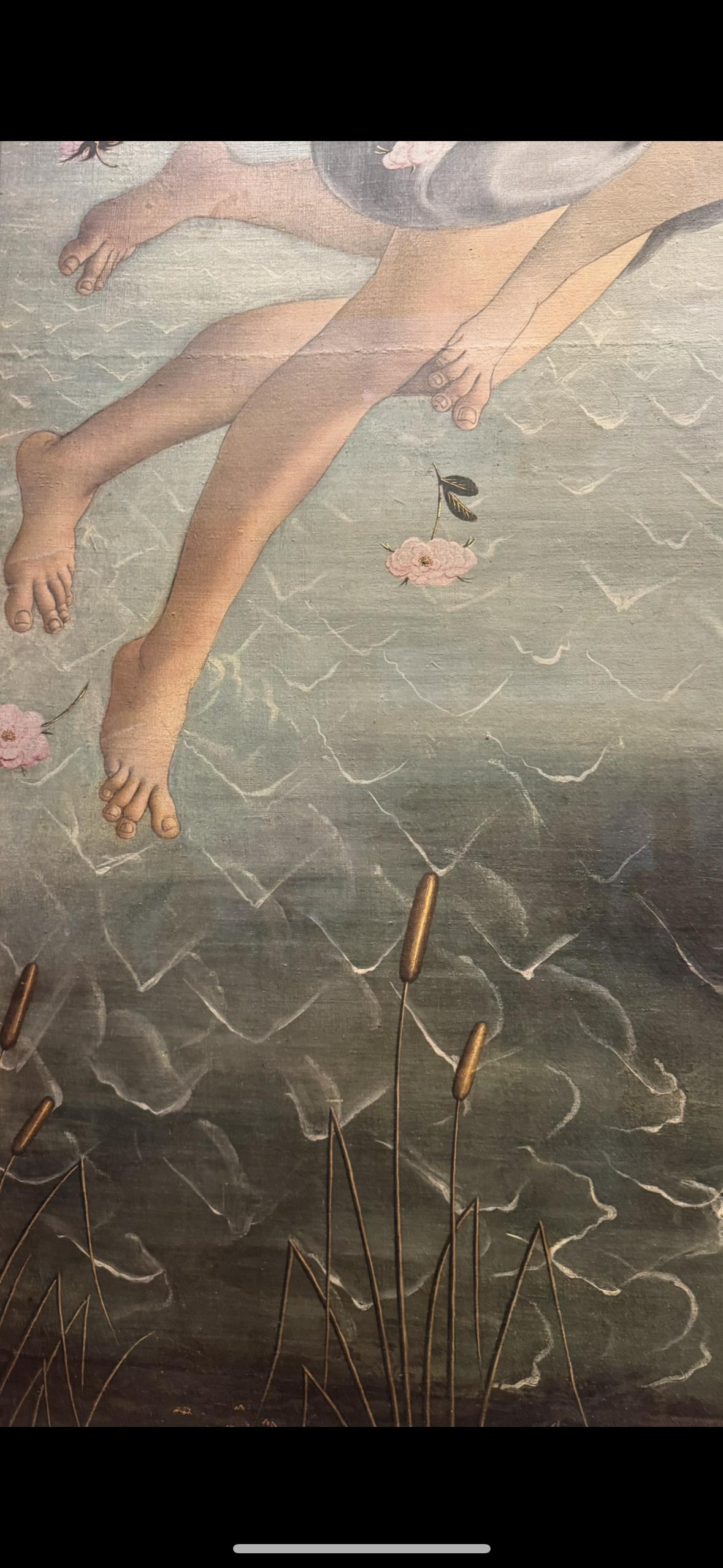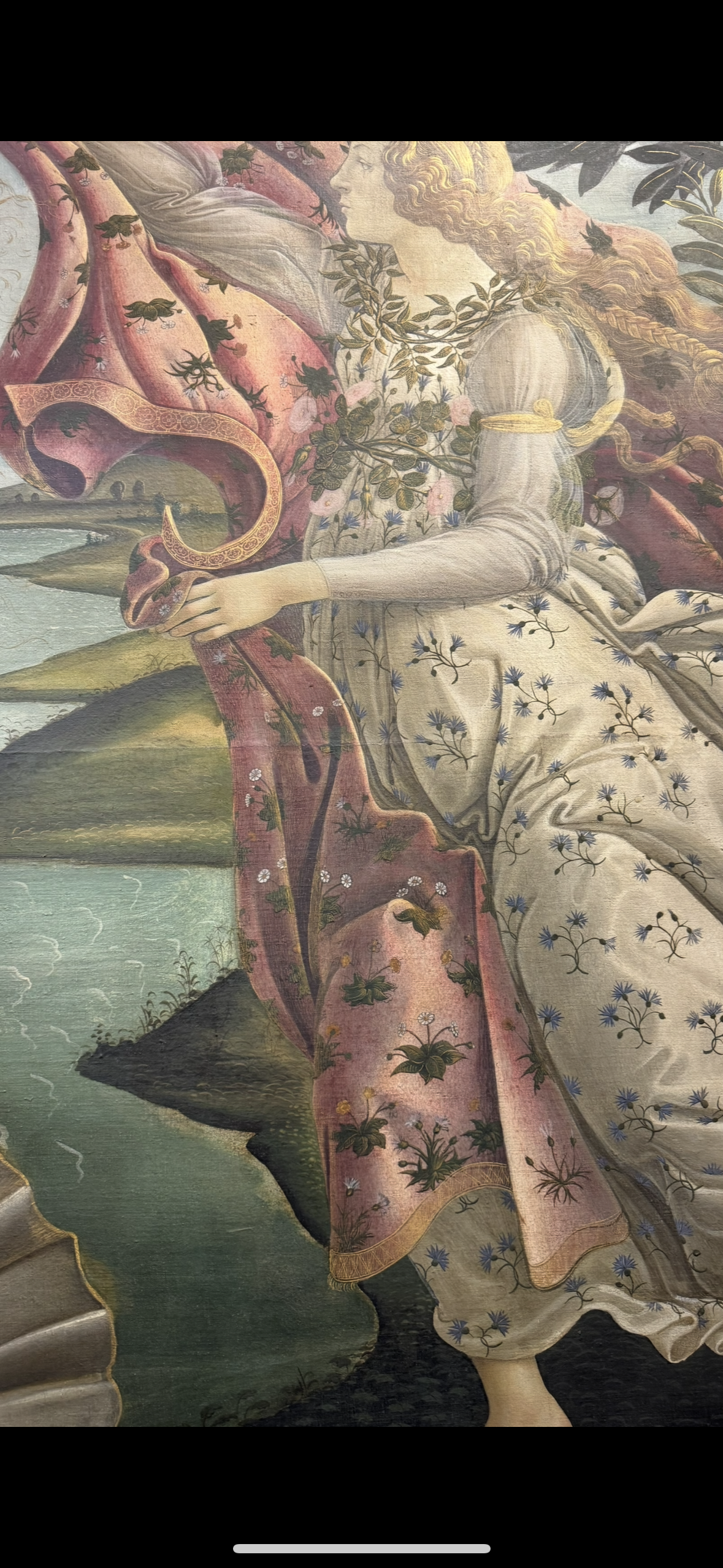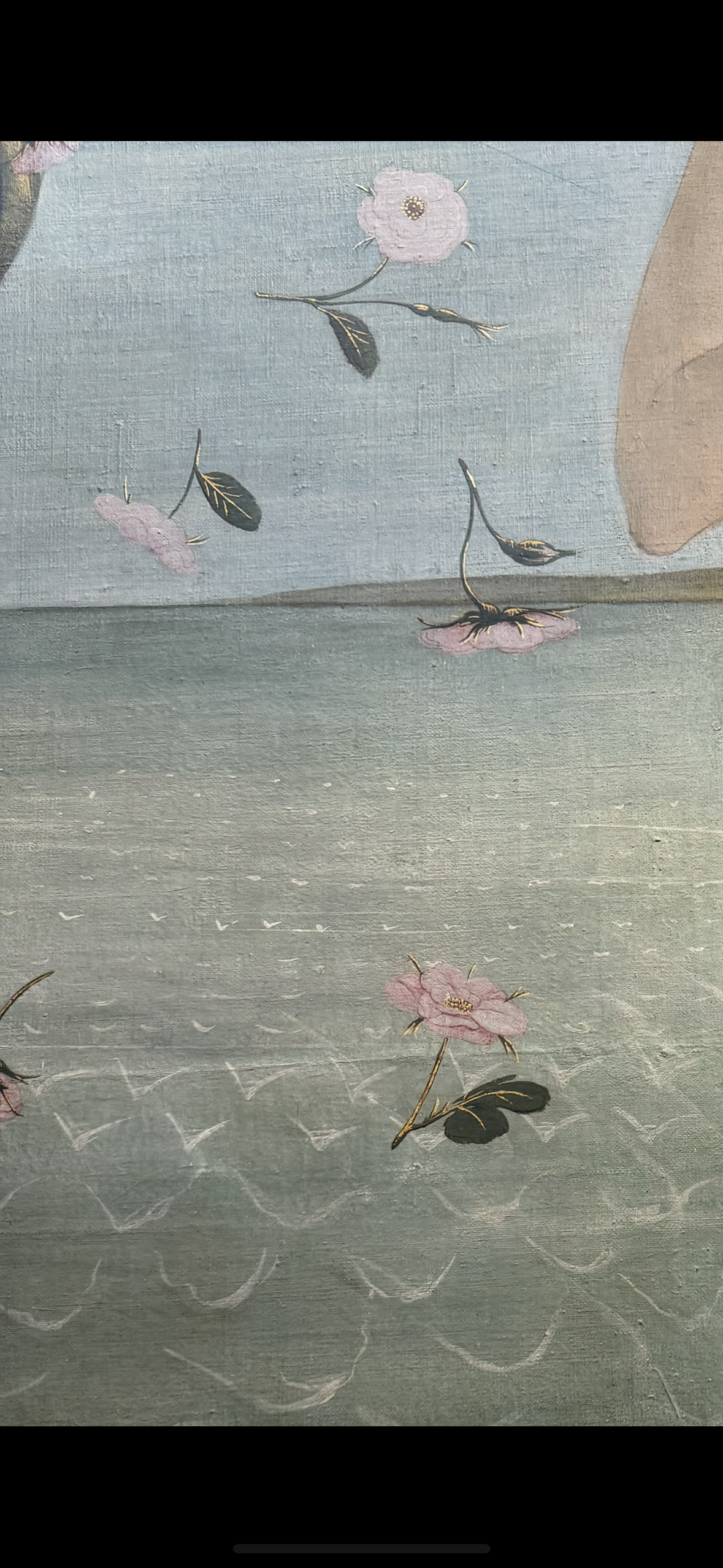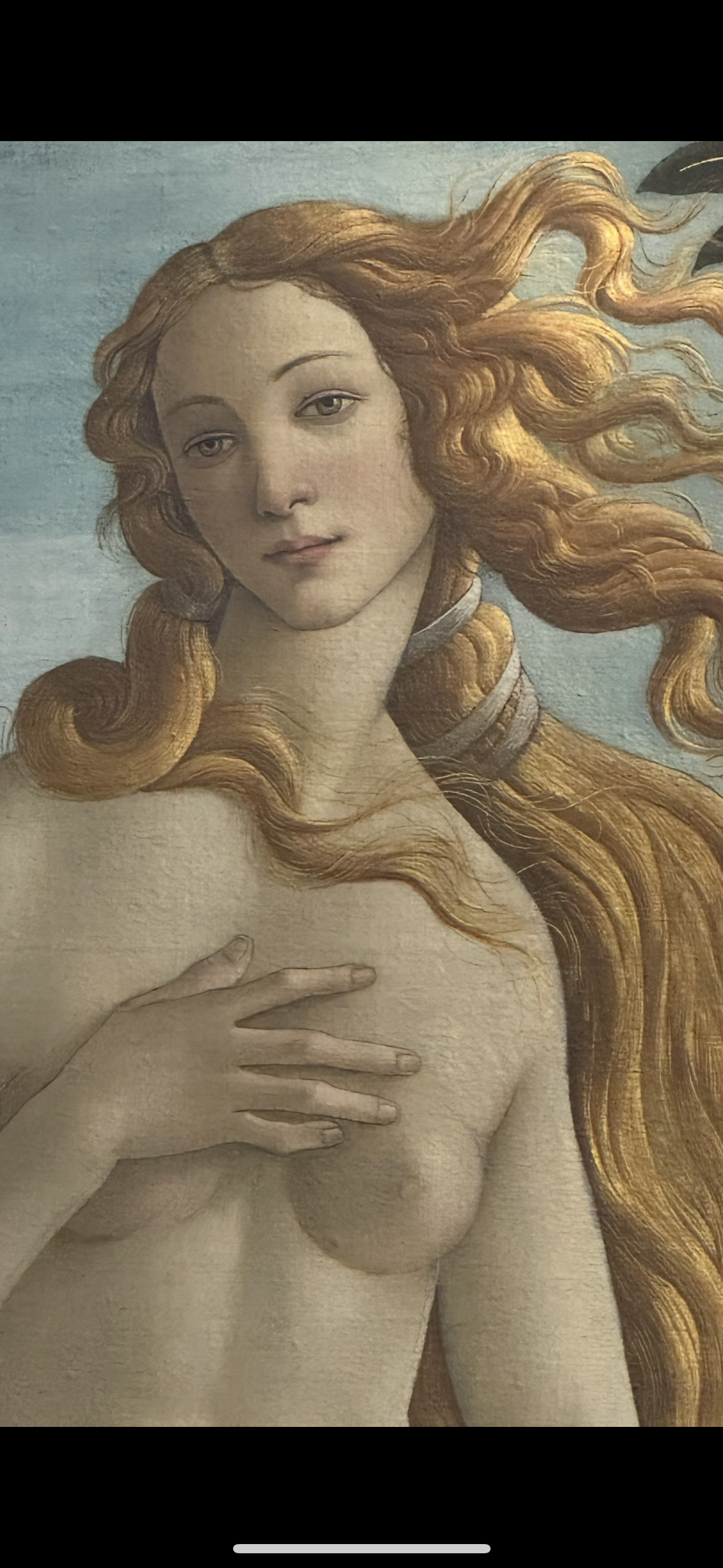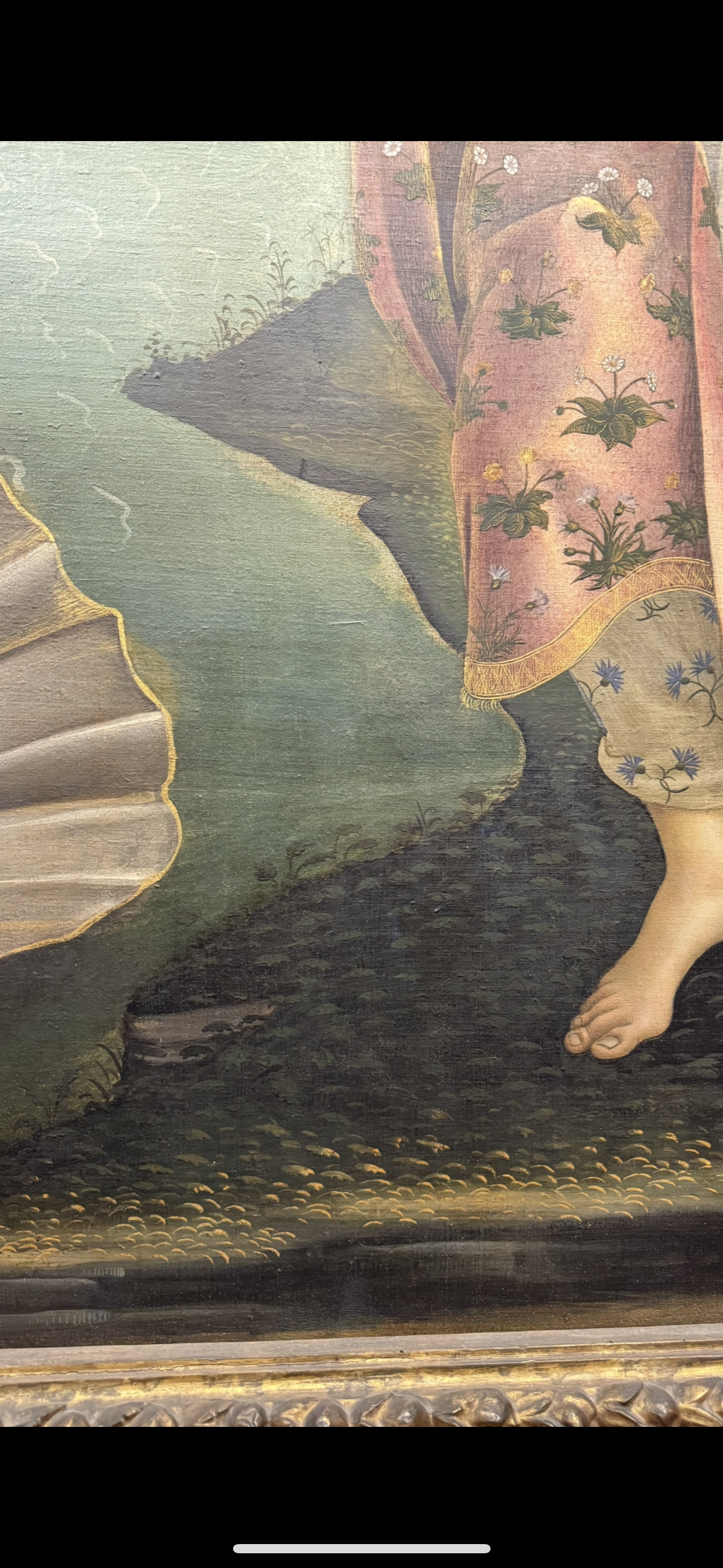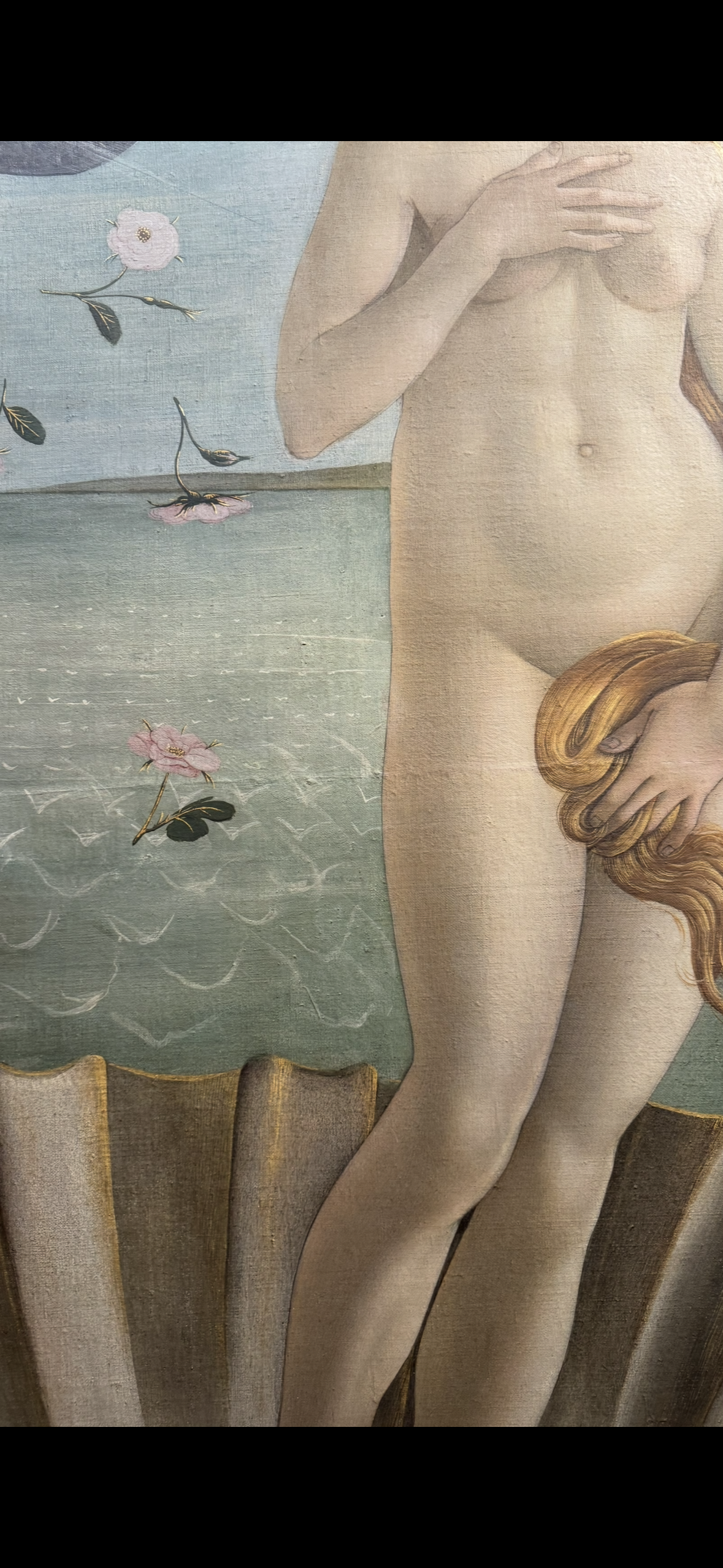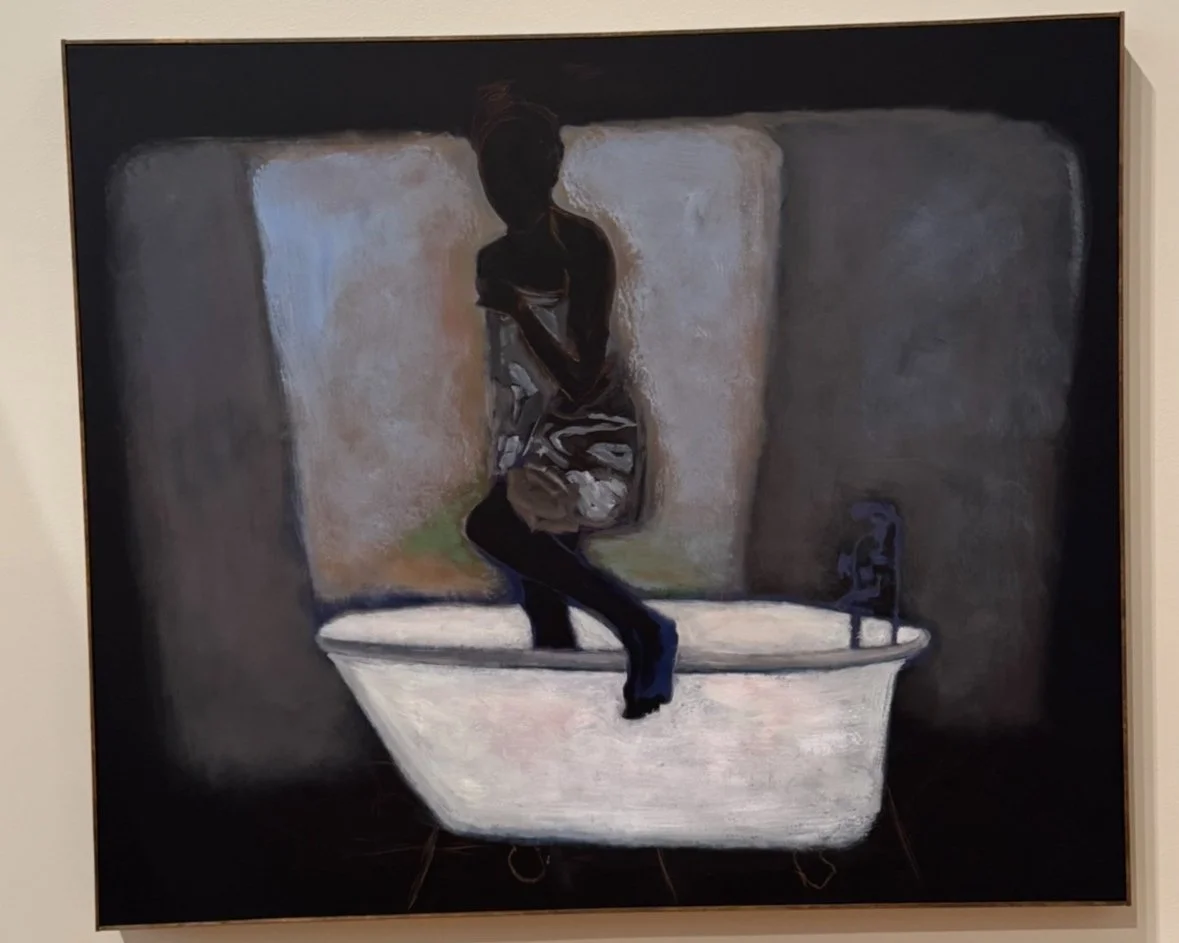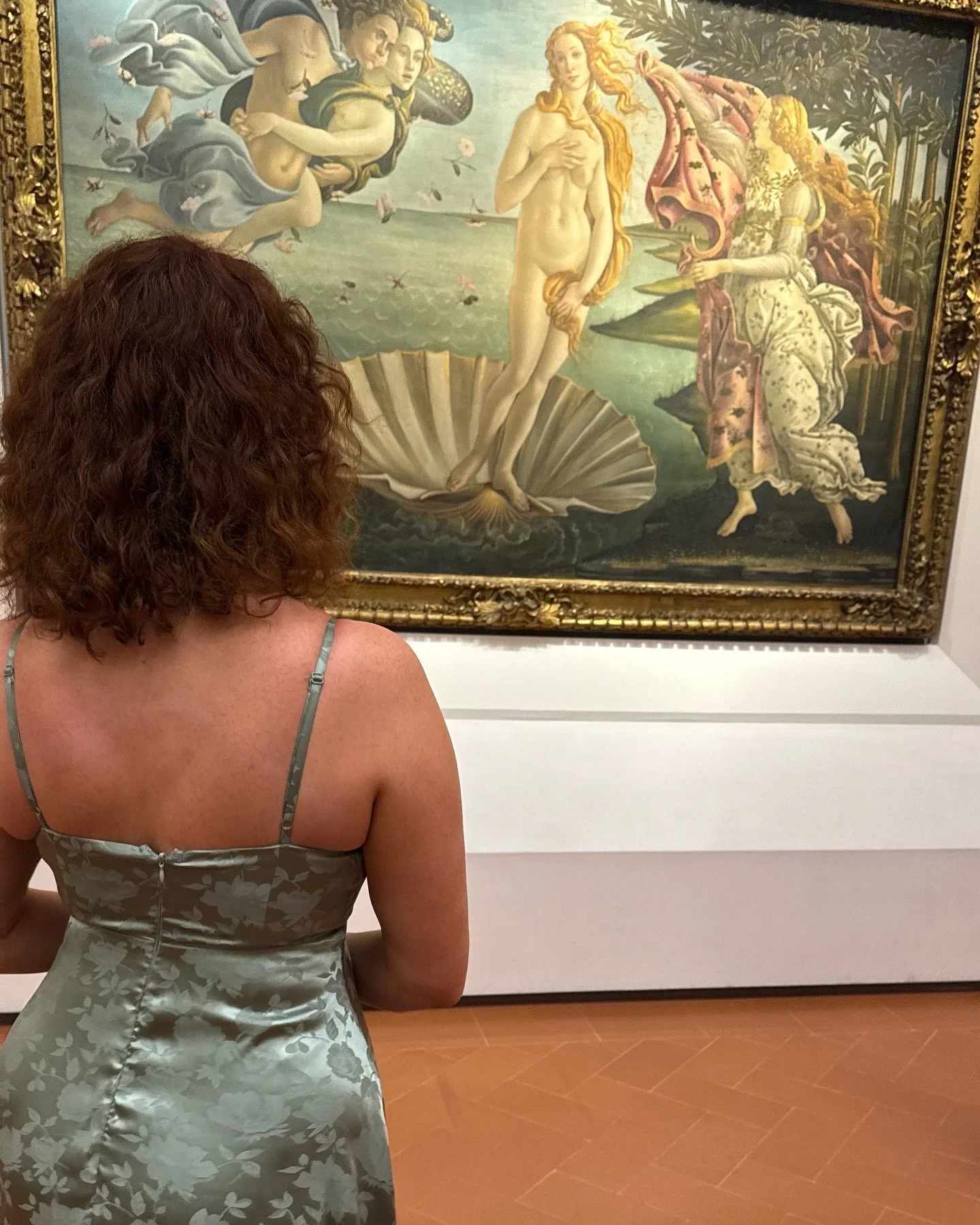Seeing Venus
In June of 2025 I finally, with the help of research funds from Colby College, was able to travel to Italy for the first time in my life and specifically visit Florence where, in a room in the Uffizi Gallery which was full (even in the early morning) of admirers, I saw Botticelli’s Birth of Venus (c.1485) with my own eyes.
When I was growing up I never visited museums or art galleries, there wasn’t really one in my hometown and we didn’t take family holidays that involved those kinds of activities. My first time visiting an art gallery was on a school trip to Paris when I was fourteen or fifteen years old, the teachers diligently accompanied us to the Louvre armed with our “School Group” skip-the-line passes, and we were whisked very efficiently and quickly to stand in front of the Mona Lisa (c.1506). We stood there for a few minutes, I remember feeling a little underwhelmed and then immediately like it was treasonous to want to look around at any of the other artworks. After a short while we were efficiently whisked back out again and onto the bus and off to our next stop. I remember craning my neck desperately as we were hurried out trying to see as much as I could before we left. It wasn’t until my first year at Oxford when I would step foot in a gallery again - that time to see a Cézanne exhibit which helped launch my love of art and museums.
It’s been ten years since that Cézanne exhibit and one interdisciplinary PhD and class-crossing lifetime later I know my way around a gallery. I can recognize a Venus from across the room (as well as a Judith and Holofernes or Salome and John the Baptist) and can usually recognize the styles of artists like Renoir, Monet, Van Gogh, and Holbein without too much prompting. I no longer feel as much an outsider as I once did and now I work on encouraging my students to visit art galleries and museums and deflate their institutional mystique to help them feel like they belong. In 2023 I taught an American Studies class at Boston University called “Black Venus, American Beauty” and we went on a field trip to the Museum of Fine Art as part of our class material. I was struck by how few students, despite living within walking distance of the museum and having access to free entry with their student cards, had ever visited the museum. Many reported they just felt sort of awkward going to the museum and were unsure how to interact with the space, the lack of a sense of belonging gave them an anxiety that kept them away. I loved our visit to the MFA as a class, we looked at art and objects from antiquity, discussed ancient hairstyles and self-care routines, and generally had ourselves a great time doing a treasure hunt for all the Venuses we could find in the museum.
“I felt like a sea goddess emerging from the foam.”
I was thinking of my students, and also my past self, when I finally was able to look the Botticelli Venus in the face for the first time.
I’ve done my share of reading, I know all about Benjamin’s “aura of an object,” and actually just earlier this year I was able to see Van Gogh’s Sunflowers (1888) at an exhibit at the National Gallery in London so I’d had the experience of seeing a long admired and dearly loved painting in person for the first time recently, but I was still unprepared.
Botticelli’s Venus is so much more beautiful than I have ever been able to communicate to my students through flattened and constantly reproduced JPGs or on my powerpoint screens. As is often the case with working from reproductions, many of which are not high quality, so many details get missed. I had no idea the extent of gold leaf that was used for example, I had never been able to see it properly in photographs before. I was also free to indulge my own eye’s curiosity - lingering on fabric and florals as much as on waves (hair and sea), scallops, and skin. The glow of the painting in the Uffizi Gallery at 8.30am suffused it with light that is impossible to capture (I tried anyway, as you can see in my gallery) and the scale of the painting also means it reflects light back into the room. I stood there for twenty or so minutes, trying not to be in the way of other visitors but also hungry for time with the goddess, and to capture resources for research and teaching.
All the while I was admiring, I was also turning over in my mind the words of Robin Coste Lewis in Voyage of the Sable Venus (2015) that there is “a war fought not over any geographical territory, but the greatest ideological territory of all: Beauty.” I also thought about Sabrina Strings’s words in her chapter “Being Venus” in Fearing the Black Body (2019) that “if the Black Venus of the sixteenth century had been the low-status counterpart to the Venus de Medici, the Hottentot Venus was its antithesis.” I thought about Sarah Baartman, Josephine Baker, Lena Horne, and the woman (re)named Venus on a slave ship discussed by Saidiya Hartman in “Venus in Two Acts” (2008). I thought about Thomas Stothard’s notorious engraving “Voyage of the Sable Venus” (1801) from which Lewis’s collection takes its name, and I thought about the great love and betrayal and beauty and horror that was contained this painting of a white goddess. I thought about Toni Morrison’s assertion that beauty was the “most destructive idea in human thought” and how when one of her Venuses, Beloved, first appears in the story, she walks out of the water fully dressed.
Reggie Burrows Hodges, USA, b.1976 Bathers and the Cleansed: Pearl, 2021
“A fully dressed woman walked out of the water”
Several hours later I would emerge blinking away the film of the fifteenth and sixteenth centuries in the bright sunshine and June heat of Florence. I hadn’t been able to stop myself from buying a LOT of Venus themed merchandise at the museum gift shop and I assuaged my guilt by promising myself I would use them as teaching tools - and as incentive to finish my book proposal.
So now I turn for the rest of the summer to writing my proposal for my book Venus Worked in Bronze and examining my uneasy relationship with the cage and the wings that our white supremacist beauty standards have created for us all.
Grace looking at the Botticelli painting Birth of Venus



